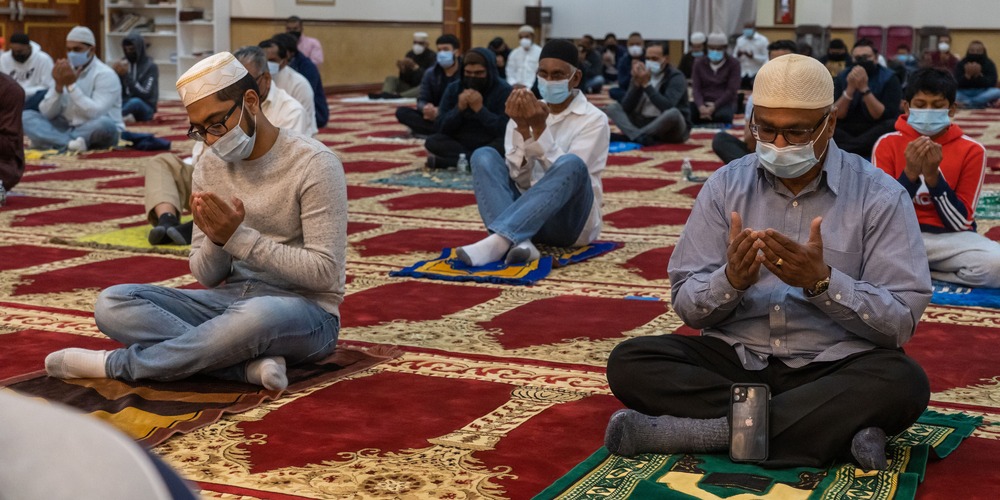Steady growth of Muslim population drove 31% rise in number of mosques in U.S. last ten years - study
The number of mosques in the United States increased by 31% to 2,769 between the years 2010 and 2020, driven by the steady growth of the Muslim population, says a study released on Wednesday (June 2).
The U.S. Mosque Survey released by the Institute for Social Policy and Understanding was conducted in collaboration with a larger study of American congregations called Faith Communities Today. This is the third survey following the first two in 2000 and 2010.
The percentage increase in the number of mosques corresponds to the 26% growth of the American Muslim community from 2010 to 2017, says the study citing Pew Research Center. Pew estimated 3.45 million Muslims in the U.S. in 2017, about 1.1% of the total population.
According to the mosque study, the overall American Muslim community continues to grow due mainly to the steady flow of new immigrants.
“When newer immigrant groups, such as Somalis, West Africans, Iraqis, Burmese, etc, reach a critical mass and/or achieve greater financial capabilities, they tend to establish their own mosques,” the study says.
“This factor highlights the point that half of the American Muslim community is still largely a first-generation immigrant community with 51% of American Muslims born outside of the United States, according to ISPU’s American Muslim Poll 2020.”
Mosques tend to be dominated by an ethnic or national group. Approximately three-fourths of mosques have one ethnic group. “More than one-third of all mosques (36%) are largely attended by South Asians, which include Pakistanis, Indians, Bangladeshis, and Afghanis,” says the study.
WHERE ARE THE MOSQUES?
The most number of mosques in the U.S. are still in the large states, with 343 in New York (33% increase from 2010), 304 in California (24% rise), 224 in Texas (up by 35%), 157 in Florida (33% growth), and 141 in New Jersey (up by 29%).
The study points out that mosques are becoming more suburban, with 17% found in downtown areas in 2010 compared to 6% in 2020.
“The apparent cause is the dwindling population of Muslims in these towns/small cities due to the drying up of jobs in these areas and the moves of young adults, children of mosque founders, and activists to large cities for education and jobs,” says the study.
MORE LATINX CONVERTS
While more Muslims were using mosques, the number of people who converted to Islam in them decreased by a substantial 31%, from 16.3 in 2000 to 11.3 in 2020. In 2010, only 2% of mosques had zero conversions, but in 2020 16% reported no conversions.
“The lower percentage of converts per mosque and the slight decrease in the actual number of converts are possibly linked to the lower number of African American converts and the lower number of African American mosques that are recording large numbers of converts,” says the study.
This extends to a 43% decrease in the number of African American mosques, which the study attributes to a few possible factors including that attendees at many historically African American mosques are no longer dominated by this demographic.
There was, however, a continued growth of the number of Latinx converts. “In 2000, only 6% of all converts were Latino/Latina, but in 2020 that percentage is now 15%.”
MORE MUSLIMS ARE GOING TO MOSQUES
Attendance for Friday prayers grew by 16% from 2010 to 2020 to an average of 410 worshippers. The authors of the study attributes this to the increase in number of Muslims, and the “build it and they will come” phenomenon. 72% of mosques reported a 10% or greater increase in attendance for Friday prayers over the last five years.
35 to 64-year-olds made up 45% of all mosque users, the biggest percentage among all age groups.
They are followed by an estimated 24% from the 18 to 34 age group, which is roughly the Gen Z and young millennials.
17% of Muslims who use mosques are between 1 and 17-years-old, and 14% are over the age of 65.
INCOME
The average budget of mosques, ex-full-time Islamic schools or zakat, in 2020 was $276,500, up from $167,600 in 2010.
52% of mosques’ income are sourced from Friday collections and pledges, followed by 31% from the months of Ramadan or Muharram.
Smaller amounts came from events (8%), online fundraising (5%), and endowments and other sources (2% each).
The mosques typically keep separate accounts for zakat, that averaged $40,640 in 2020.
The second part of the U.S. Mosque Survey report will be released in July.
© SalaamGateway.com 2021 All Rights Reserved
